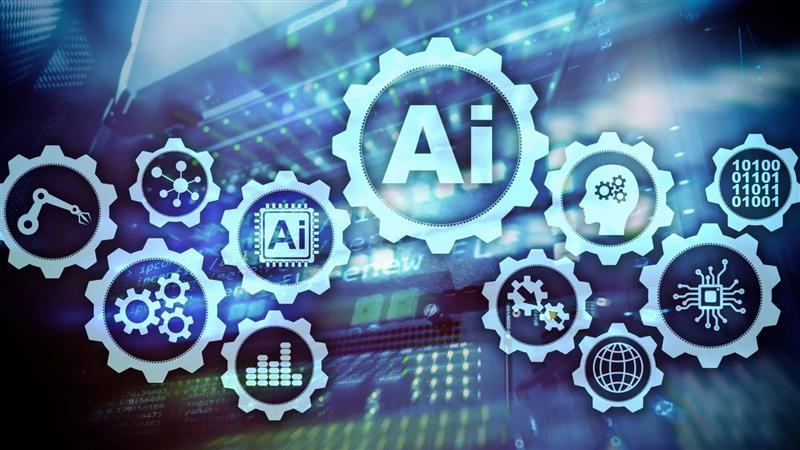
Artificial Intelligence (AI) is spearheading the digital revolution that we are experiencing. AI tools are all around us providing us conveniences in our personal lives and helping businesses enhance their efficiency for better outcomes.
However, as we move ahead in the digital arena, our systems, data, and networks become vulnerable to cyberattacks. The advancements in technology also increase cyber threats and the complexities of defending them.
Traditional cybersecurity systems function based on predefined rules and signatures for defending malicious activities. However, rule-based defenses are limited in scope and are unable to keep pace with the ever-evolving domain of cyberattacks. Besides, in traditional systems, cybersecurity professionals use tools to manually monitor and analyze threat data which is collected from on-premise and cloud systems to identify vulnerabilities and threats. The process is slow and exhaustive. As data increases in volume and velocity, legacy systems are unable to keep pace.
The good news is that AI has emerged as a powerful tool to address the rising cybersecurity concerns!
According to a report by Cap Gemini, 63% of the organizations plan to deploy AI in 2023 and 69% believe that they will not be able to respond to cyberattacks without AI (Source: Simpli Learn).
Let us delve into the role that AI is playing in cybersecurity!
- Identifying Threats
Machine Learning (ML) algorithms scan large volumes of data and identify patterns. They can detect any inconsistencies that help track down known threats and identify new attack vectors.
- Preventing Threats
AI bots scan existing systems, networks, devices, etc. to identify vulnerabilities. Cybersecurity professionals can take proactive steps to prevent attacks. AI algorithms gather and analyze large volumes of threat intelligence data from multiple sources. This analysis provides information about emerging threats, attack patterns, etc. These insights enable cybersecurity professionals to take proactive steps to prevent cyberattacks.
- Raising Alerts
ML algorithms can identify abnormal behavior or suspicious activities based on their analysis of typical user behavior, network traffic, and systems logs. They raise alerts when they detect anomalies which helps identify unauthorized access attempts, insider threats, etc.
- Mitigating Threats
AI bots help organizations mitigate risks by automating responses to cybersecurity incidents. Automation minimizes the response times thereby reducing the impact of the attacks. In case of an attack, AI bots can identify the nature and extent of the breach at a rapid pace and facilitate timely remediation.
- Defending Attacks on ML Algorithms
Often cyberattacks target the ML algorithms also known as adversaries. Adversaries attack the vulnerabilities of AI algorithms to evade detection. They can also manipulate the data the algorithms rely on. Techniques like adversarial training facilitate the detection and mitigation of such attacks.
- Minimizing Risk
AI-based techniques like biometrics, facial recognition, behavioral analysis, and voice recognition reduce the risk of unauthorized access or account compromises. ML algorithms can also learn from user behavior and can identify suspicious behavior to prevent unauthorized access.
- Frees Security Analysts
Bots take over routine tasks like generating reports, detecting anomalies, threat hunting, responding to incidents, and more. This frees cybersecurity professionals who can focus on activities to enhance the efficacy of cybersecurity systems.
It is evident that AI automates tasks like threat hunting, malware analysis, vulnerability detection, phishing email containment, and more.
Generative AI tools have now emerged at the forefront to enhance the cybersecurity capabilities of traditional AI!
Generative AI in Cybersecurity
Generative AI models are Large Language Models (LLMs) that mimic humans. These models are trained on extensively large datasets. These models learn and understand the existing patterns and structures in the data. The generative process facilitates the creation of new data that mimics the learned patterns and structures.
Gen AI models can be trained on large volumes of historical cybersecurity data which helps the model identify patterns and structures. Based on this training data, Gen AI models can predict future threats. Hence, Gen AI models can anticipate threats before they occur. This approach helps maximize the efficiency of existing tools. Generative AI facilitates a proactive approach to cybersecurity.
Gen AI models can generate realistic training data such as phishing emails, fake websites, and malicious code which enables ML algorithms to detect and prevent attacks.
Generative AI also secures systems by providing an extra layer of security. It can be used to generate complex and unique passwords or encryption keys that will be extremely tough to guess. This is because weak and compromised passwords serve as vulnerable entry points for security breaches.
Gen AI facilitates real-time threat detection which helps cybersecurity professionals to take timely action thereby reducing the impact of cyberattacks.
Generative AI can simulate realistic examples of cyberattacks that can be launched against organizations. This helps organizations develop strategies to recover from such attacks.
While Gen AI helps businesses build robust cybersecurity strategies, one must be aware that this technology can also be leveraged by hackers to create sophisticated attacks. Hence, organizations must be cautious about the risks associated with using Gen AI tools and take necessary action to mitigate these risks.
In Conclusion
We are witness to the rapid rate of advancements in the field of Artificial Intelligence. AI is a powerful tool that enables cybersecurity professionals to detect and prevent cyberattacks. However, the entry of Gen AI in cybersecurity has taken the efficacy of cybersecurity to new levels. According to a survey by PwC, over two-thirds of businesses worldwide intend to deploy Gen AI tools to boost their cybersecurity solutions within the next year (Source: Financial Express).
Generative AI technology holds a lot of promise to boost cybersecurity strategies. As this technology continues to evolve, we can only expect it to add more layers of security to systems, networks, data, and devices thereby creating a safe space in the digital ecosystem.





